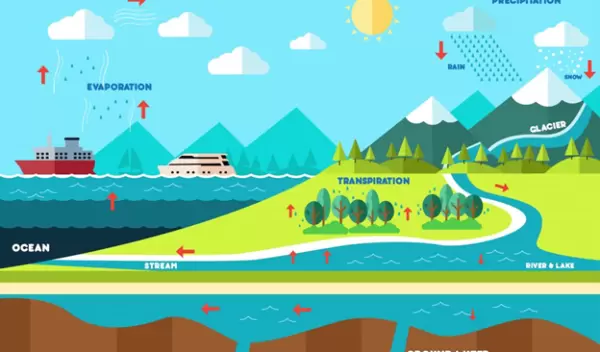
Streams more vulnerable to stressors such as climate change than previously thought
Water is constantly on the move: through the air, through waterways, and underground. Life depends on a consistent supply of water, and details about its journey are necessary for understanding and managing this important resource.
However, those details are often difficult to measure. Now, University of Connecticut scientists Danielle Hare and Ashley Helton have expanded on a novel method to easily access vital details about groundwater. In doing so, they have discovered that many streams are more vulnerable to stressors such as climate change than previously thought. The U.S. National Science Foundation-funded research team published the findings in Nature Communications.
Precipitation enters streams and rivers by flowing over land surfaces or percolates through soil into the groundwater. Groundwater then flows back into waterways, but understanding the details, such as the depth of groundwater entering streams, is more challenging.
"Normally, you'd have to go to a site and spend a lot of time just to figure out the source of groundwater discharging to the stream," Hare says.
That information is important for watershed managers, who take into account numerous variables to keep water clean and safe, both for drinking water and for wildlife habitats.
Details such as depth are crucial because, for example, shallower groundwater reserves are more prone to disturbances than deeper sources. The scientists say that one of the threats to streams supplied by shallow groundwater is climate change, as shallow groundwater is more susceptible to warming.
Hare and Helton used data that are frequently gathered and often publicly accessible: stream and air temperature measurements. These data are paired at more than 1,700 streams nationwide. The researchers were able to deduce which streams had substantial groundwater inputs and, of those, which were fed by deep or shallow groundwater.
"Something that surprised us was how prominent shallow groundwater sites are across the U.S.," says Hare. "We saw that about 40% of the sites had a substantial groundwater component. We would have guessed that there were more deep groundwater sites."
Adds Gary Lamberti, a program director in NSF's Division of Environmental Biology, "Groundwater flow paths are very complex but extremely important to the quality of surface water. This research provides exciting new tools for determining how our aquifers and the freshwater ecosystems they support are being affected by environmental change."


